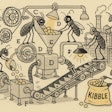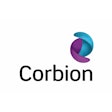
The United States Food and Drug Administration divides the removal of pet food or treats from the market into three classes of recalls or as a withdrawal. Class one recalls are the situations that are the most critical, Michele Sayles, Ph.D., executive director of food safety and technology for Diamond Pet Food, said during her Ask the Pet Food Pro presentation.
Class I recall: a situation in which there is a reasonable probability that the use of or exposure to a violative product will cause serious adverse health consequences or death.
Class II recall: a situation in which use of or exposure to a violative product may cause temporary or medically reversible adverse health consequences or where the probability of serious adverse health consequences is remote.
Class III recall: a situation in which use of or exposure to a violative product is not likely to cause adverse health consequences.
Market withdrawal: occurs when a product has a minor violation that would not be subject to FDA legal action. The firm removes the product from the market or corrects the violation. For example, a product removed from the market due to tampering, without evidence of manufacturing or distribution problems, would be a market withdrawal.
Among these classes of recalls, four common types affect the pet food industry: mycotoxins, pathogens, foreign material and nutritional deficiencies or toxicities, she said. During the past decade in the pet food industry, pathogen related recalls were among the most frequent. Along with direct contamination by microorganisms such as Salmonella, ingredients tainted by fungal mycotoxins, like aflatoxin, have caused pet food recalls.
“The third biggest category for recalls has been nutritional deficiencies and toxicities,” she said. “In the last two to three years, vitamin D has been on the top of that list.”
Preventing pet food recalls with data management
Data management and analysis are critical to preventing these types of pet food recalls and dealing with them when they do occur, she said. For example, a pet food company needs this data to prove that they use statistically sound sampling procedures for incoming raw materials and outgoing finished products.
“The biggest asset or the biggest help is creating documentation, records and most importantly data to support the robustness of your program and the robustness of your products.”
Tips for pet food recall rehearsal and preparation
It is better to be prepared for a pet food recall that never occurs than to be unprepared when a recall does occur. Beyond that obvious axiom, pet food companies can take concrete steps to ensure a recall never happens and remains manageable if one does hit, Sayles said.
The fundamentals matter in pet food recall preparation, and the bedrock is a plan. Companies have a wide range of guidance to help them develop those programs, including from the U.S. Food and Drug Administration, she said. Thinking beyond that plan, into the administration of implementation such as phone trees, make the plan more practical.
“What are some of the things that you do outside of just the actual recall plan?” she asked. “Who are you going to call? What customers to call?”
Mock recalls help pet food companies refine their ability to locate and retrieve finished products. Traceability becomes key.
“A good rule of thumb is one step forward, one step back,” she said. “One step forward would be finished product traceability and one step back would be ingredients.”
Within the ingredient category, differences between minor ingredients and major ingredients need to be considered, she said, such as vitamins and minerals versus carbohydrate and protein sources.
Pet food companies must prepare to roll with these plans quickly, she said. In audits, identifying choke points that slow the process can reveal opportunities for improvement.
“Obviously, the more you practice them, the better that you get,” she said.
Lot coding and data management play an important role in traceability.
“For example, if you identify an issue with a particular ingredient, and it has a lot code that extends for months that could create issues as far as how much product you're going to have to recall,” she said.
Data management is critical in a pet food recall program. A data-driven recall program can provide more than just a means to trace a specific lot of a certain ingredient. In a world of skeptical consumers, information of how products are made helps prove pet foods are safe and made to specifications to pet owners as well as health inspectors.

















